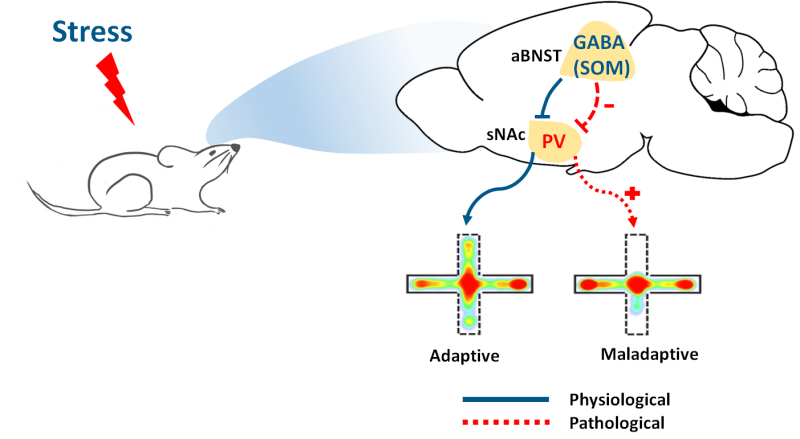
Stressors and stress responses are physical signs or symptoms. Previous studies suggested that the bed nucleus of the stria terminalis (BNST) is a critical node in the stress response neurocircuitry.
Recent work on human drug addiction has also demonstrated the role of BNST in withdrawal-related anxiety and relapse, indicating an intrinsic link between this stress response region and the reward system.
The nucleus accumbens (NAc) is a vital component in the reward circuitry, which responds to stress signals, and has a dominant effect on anxiety regulation.
Since both BNST and NAc are engaged in stress-related disorders, what are the interactions between these two regions?
Researchers from the Shenzhen Institutes of Advanced Technology (SIAT) of the Chinese Academy of Sciences, for the first time, revealed a circuit mechanism, in which BNST modulated the NAc, exerting a direct effect on anxiety. Their study was published in Molecular Psychiatry on June 18.
They used functional MRI signaling, GCaMP-based fiber photometry recording, genetically modified virus tracing and both optogenetic and chemogenetic neuronal manipulations. The results showed that in an anxious state, there was an increased functional connectivity between BNST and NAc.
Parvalbumin (PV) neurons within the NAc shell (sNAc) exhibited high excitability in a chronic stress mouse model that displayed excessive maladaptive avoidance during anxiogenic stimuli. Activation of these accumbal PV neurons promoted an avoidance coping response in healthy mice.
Moreover, a new GABAergic somatostatin (SOM) afferent from the anterior dorsal BNST (adBNST) was uncovered, which directly innervated sNAcPV neurons. Optogenetic activation of these GABAergic terminals in sNAc produced an anxiolytic effect, which was mediated by sNAcPV cells.
Inhibitory projections from adBNST attenuated sNAcPV neurons on the chronically stressed mice, and thus, activation of these inhibitory inputs from adBNST to sNAc rescued the excessively anxious state of the stressed mice.
"The results provide a potentially neurobiological basis for therapeutic interventions in pathological anxiety. It may also help to explain why anxiety and addiction are highly comorbid, although these two common psychiatric disorders engage in emotion and reward circuits, respectively," said Prof. TU Jie.

A new GABAergic neuronal circuit from the BNST to NAc regulates anxiety-like behavior (Image by SIAT)

86-10-68597521 (day)
86-10-68597289 (night)

52 Sanlihe Rd., Xicheng District,
Beijing, China (100864)

